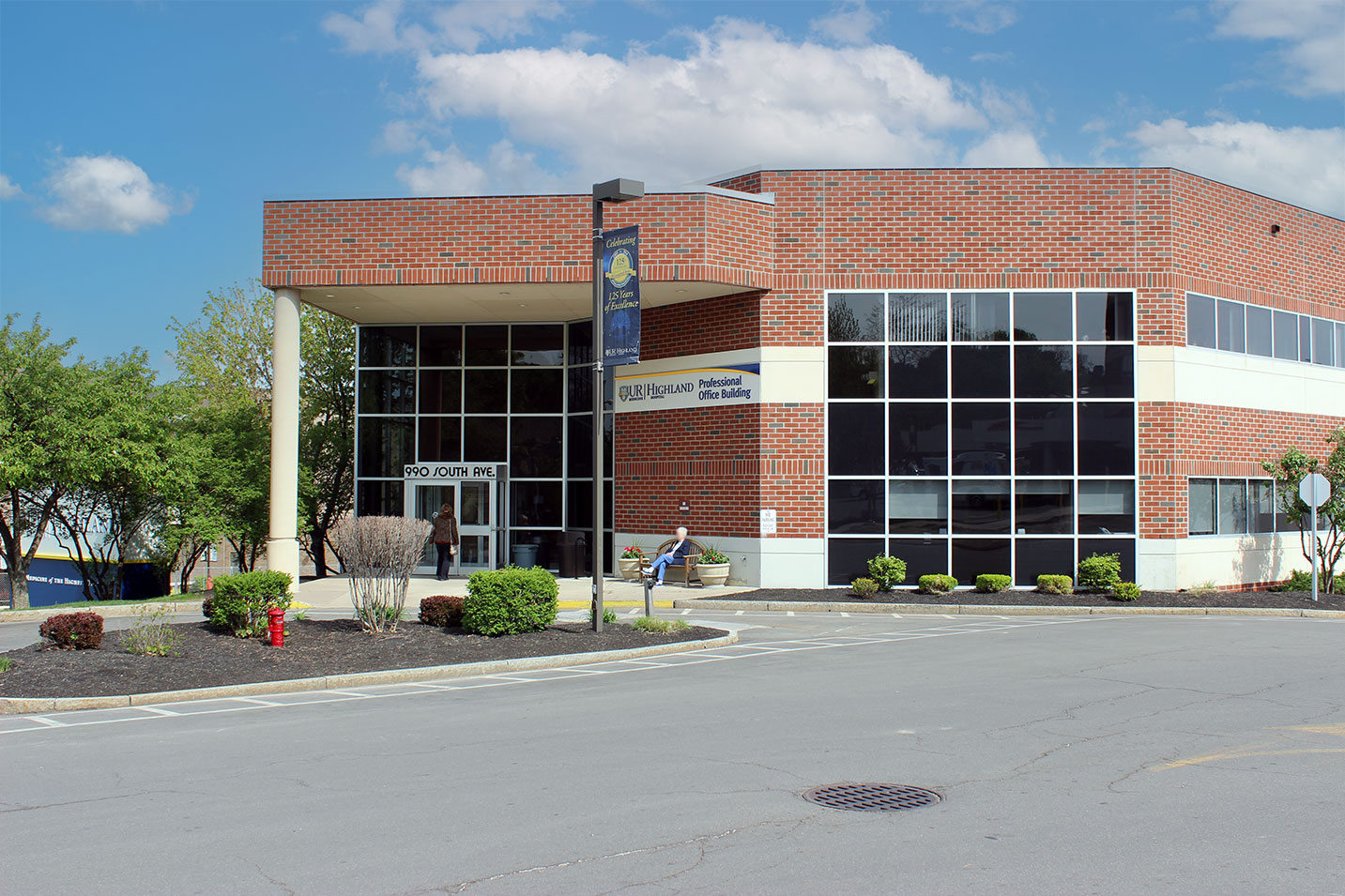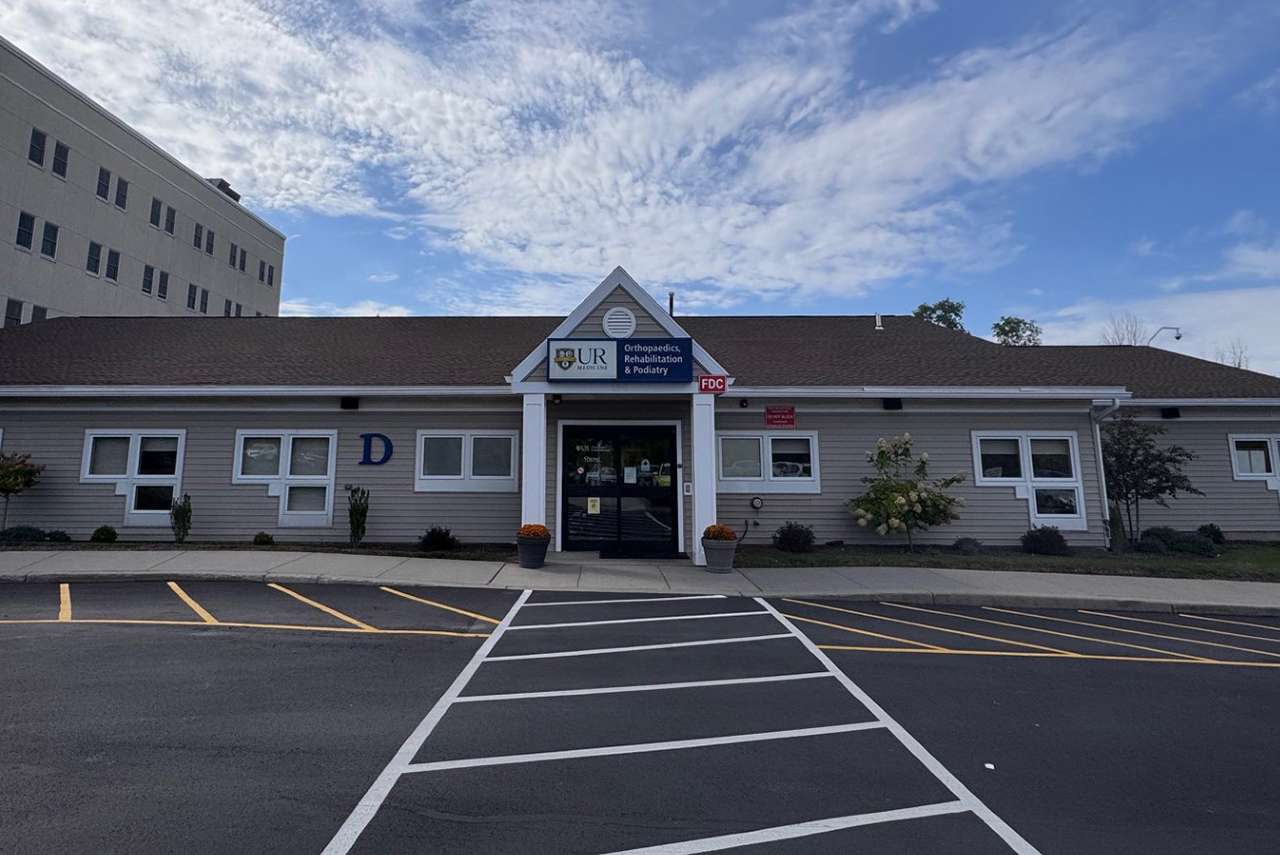Bone Disease
Make Appointments & Get Care
What is Bone Disease?
When we think of bone disease, osteoporosis often comes to mind—but the term covers much more. It includes conditions like bone cancers, infections, celiac disease–related issues, brittle bone disease, and other disorders that lead to bone loss, weaker bone structure, or damaged bone tissue. These problems can stem from family history, nutrient deficiencies, hormonal imbalances, or chronic illness.
By the Numbers
1 in 3 women experience a bone fracture from osteoporosis after age 50
UR Medicine's Treatments for Bone Disease
Because bone disease can have so many causes, our UR Medicine Bone Health team uses the most advanced diagnostic tools available to develop a complete understanding of your condition, its causes, and the path we’ll take to help you.
Your care team starts with a detailed health history and physical exam—looking at everything from bone mass changes and bone growth patterns to fracture risk and broken bone incidents. Tests may include:
Bone density test (DEXA scan) to measure bone mass.
Imaging (X-ray, CT, MRI) to view bone structure, detect tumors or fractures.
Blood and urine tests to assess metabolic or genetic contributors.
Once we understand your condition—whether it’s osteoporosis, juvenile osteoporosis, osteogenesis imperfecta (“brittle bone disease”), or disorders affecting calcium and hormone metabolism—we’ll build an individualized plan that may include:
Medications, injections, or infusions to support bone mass and strength.
Lifestyle and dietary guidance to boost bone mass and reduce bone loss. Maintaining bone tissue through tailored nutrition and exercise is essential.
Coordinated care across specialties—endocrinology, orthopaedics, rheumatology, nephrology, genetics—to treat underlying causes.
Common Conditions We Treat
We manage a broad spectrum of bone conditions, including:
Osteoporosis & osteopenia
Metabolic disorders like hyperparathyroidism and Paget’s disease
Genetic conditions such as brittle bone disease (osteogenesis imperfecta)
Infection-related bone issues like osteomyelitis
Bone complications from organ transplant, endocrine or kidney disorders
- Arthritis, Psoriatic Arthritis, and Rheumatoid Arthritis
What Sets Us Apart?
The area’s most extensive bone health program. UR Medicine's Center for Bone Health is one of only a handful in the country that combine total orthopaedic care with the treatment of metabolic bone disease for patients of all ages.
Physicians at the forefront of science. UR Medicine Bone Health providers have expertise in the diagnosis and treatment of all adult and pediatric metabolic bone diseases—diseases that affect bone strength.
The specialists in UR Medicine Orthopaedics & Physical Performance are experts in fracture care, the first to spot and treat fractures that are often the initial symptoms of metabolic bone disease. In addition, we are the only program in the Rochester metropolitan area and surrounding region that can diagnose and treat children as young as 5.
Our teams bring together pediatric endocrinology, orthopaedics, nephrology, rheumatology, endocrine surgery, and medical genetics experts to provide complete care.
Locations
View All LocationsWe serve you in the Rochester metropolitan area and surrounding region.
View All Locations5 locations
990 South Avenue, Suite 103
Rochester, NY 14620
2255 South Clinton Avenue
Rochester, NY 14618
Highland Professional Office Building
990 South Avenue, Suite 207
Rochester, NY 14620
Strong West Annex, Building D
156 West Avenue
Brockport, NY 14420
Medical Office Building
7309 Seneca Road North, Suite 116
Hornell, NY 14843

